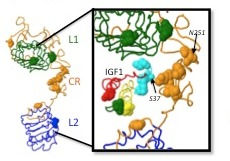
OUR STUDY SYSTEMS





ON-GOING RESEARCH
Women live longer than men, and different age-related diseases afflict women and men. Our poor understanding of the basis of these sex-differences promote disparities between men and women in the success of treatments of age-related diseases. The Insulin and Insulin-like Signaling (IIS) molecular pathway is known to regulate longevity. This project is aimed at understanding how specific hormones in the IIS pathway regulate the aging process within the cell and the organism.
We are developing a lizard model for aging (brown anoles) that to better define the processes of how males and females age differently so that treatments and therapies can be designed to be more effective within a sex, and promote healthy aging across both sexes.
Organisms can increase stress resilience when conditioned to a mild stressor during development, where as severe stress can decrease survival and reproduction. This context dependency makes it difficult to predict how a shift in an environment will affect an individual and ultimately the success of a population. We currently lack predictive models and reliable biomarkers of stress resistance and resilience. The goal of this project is integrate molecular measures of cellular damage, protection and repair using zebra finches with path analysis and Damage-Healing Mechanics from material engineering. Through this integration, we will develop mechanistic and predictive mathematical models, linking developmental and adult environments, epigenetic modifications, stress-induced molecular and cellular damage, and fitness indices.
The "Island Rule" is a worldwide phenomenon of rapid body size evolution on islands where smaller taxa show a tendency towards dwarfism, and larger taxa show a tendency towards gigantism. On the Channel Islands off the coast of California three species of reptiles have evolved to be dwarf relative to the mainland populations. We are using the repeated evolution of dwarfism to understand how molecular networks (genes, hormones, etc) underlying complex traits, such as body size and reproduction, can evolve integrating data from genomics, physiology, morphology, and life history. These molecular data are integrated with estimates of reproductive output obtained through advanced field-portable ultrasound technology which can inform us about the life history evolution of these species as well that allows us to extend our understanding of the process of convergent evolution on correlated life-history traits.
Function and Evolution of Molecular Networks
We study the evolution and function of multiple molecular networks in non-traditional model systems (reptiles, daphnia) that can bring novel insight into how these networks function in natural populations of animals, and evolve in response to different species. Our current favorite networks include the Insulin and Insulin-like Signaling (IIS) network (particularly in lizards), the molecular mechanics of glucocorticoids, and functional consequences of mitochondrial-nuclear interactions such as in hybrid parthenogenic lizards.

Stress Genetics
In natural environments, individuals experience multiple stressors throughout their lives. Stressors can come in the form of temperature (heat/cold), social interactions, habitat destruction/degradation, food availability, predation, and even intense periods of growth and reproduction. How individuals respond to these stressors, and interactions among these stressors, will determine their capacity to survive and reproduce, and ultimately if the population will persist.
We study how animals respond to stress at the molecular levels and how response evolve across populations using reptile and Daphnia models

Development of Molecular Resources for Emerging Eco-Evolutionary Models
Because we work on many fascinating species, for most of our projects we develop resources and protocols to be able to answer our questions using these species. These resources include high quality genome assemblies, transcriptomes, primary fibroblast cell lines, as well as novel protocols.



